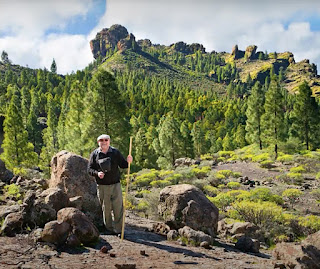Our world is one of uncertainties, Dear Readers! And those uncertainties certainly do not behave in an orderly manner. However, that should not prevent us from keeping a clear mind about it. Dare I say: we should remain rational thinkers even in a world that is behaving with uncertainties that are most of the time impossible to quantify.
Statisticians have their own way to help us with this endeavour. They do their utmost to make us believe that there is order after all in the general chaos. Their basic assumption is that most occurrences in the real world behave as if they were distributed according to the so-called “normal distribution.” Given that assumption, they suggest we relax and return to believing in a world behaving as it should. It is just that many things will be uncertain but still orderly.
Me, I do not count myself as a believer in that assumption, except in the (let’s agree) many facts of life that actually behave as if distributed normally. The remainder, which pop up now and then, are important and can even be life-threatening, I have my own kind of rationality to apply to those cases, one I have established already in my Ph.D. thesis, which in turn is based on a venerable mathematician by the name of Bayes.
Staying with Bayes, rather than showcase my own proficiency, this eminent mathematician developed the basic aid for rational decision-making under genuine uncertainty. It is called the Bayes’ Rule. But do not worry, Dear Readers. His theorem looks a bit strange for those not versed in probability mathematics. Still, its meaning is, at the same time, profound and simple. In ordinary man’s words, it simply boils down to: “Use your common sense! And be prepared to adapt your views, if new facts of life become known to you!”
You may wonder why I am starting this blog with the philosophy of knowledge gathering. But recent events have forced me to reluctantly do exactly what Bayes’ Rule prescribes. It concerns the new type of vaccination that has been introduced as a lifesaver in these times of the Corona plague. When vaccination had gone on for a while, I considered the information available concerning possible side effects, known by then and until recently, and judged them to be of relatively minor consequence compared to the quite real death risk for us elderly, when getting the disease without prior vaccination. Not only did I take the vaccine the first time it was offered, I even continued taking the updtates and, till now, have received fully four boosters to the first one.
But new information has arrived, and, like Bayes, I am forced to adapt my views to these new facts. It started with a series of videos on Youtube that showed a strong increase in a new form of blood clots in the bodies subjected to balsamation after death. A new fact of life that certainly got me thinking about whether to take yet another booster shot when offered. Still, it was explained away by the good old doctors being on the forefront of the public mind. The explanation was still somewhat plausible: “These blood clots of abnormal type, occuring in a great number of bodies balsamated after 2020, have been formed after death and therefore are nothing to worry about!”
But new facts start popping up. And this time, the same type of completely new blood clots, never seen in human beings before 2020, keep being mentioned by medical technicians working in laboratories that deal with eliminating blood clods in humans seriously threatened by their occurrence. So, we have to start accepting that they also form in living bodies. Don’t worry, Dear Readers, you don’t have to take my word for it. Granted that the medical establishment still believes in the normal distribution and, unlike Bayes, remains undisturbed by new facts popping up outside this venerable curve, there is the odd practitioner and their assistants that start to get worried and let the general public know about this new abnormality.
I do not have to await years of patient, albeit slow, research to adapt my view of the world. I am ready to change my position vis-á-vis vaccination of the new type right now. Till further notice, that is. Until the cause for this new pathology has been duly researched and the new method of vaccination has been modified to minimize these new side effects, I will most certainly abstain from any more booster shots against Covid! Not only that, any new application of this new so-called RNA-technique on vaccination, be it against influenca, RS-virus or whatnot, will be categorically refused by me.
You are, of course, entitled to your own opinion. Bayes’ Rule just states that you shall adapt your views to new facts popping up in real life. But it does not tell you exactly how! So I won’t hold it against you if you, even in view of these new fasts, stick to the good old RNA-booster shots. The only thing I am asking you is to look at the enclosed video, imbibe the new facts, and make up your own mind!
https://philipmcmillan.substack.com/p/are-the-embalmers-clots-occurring















